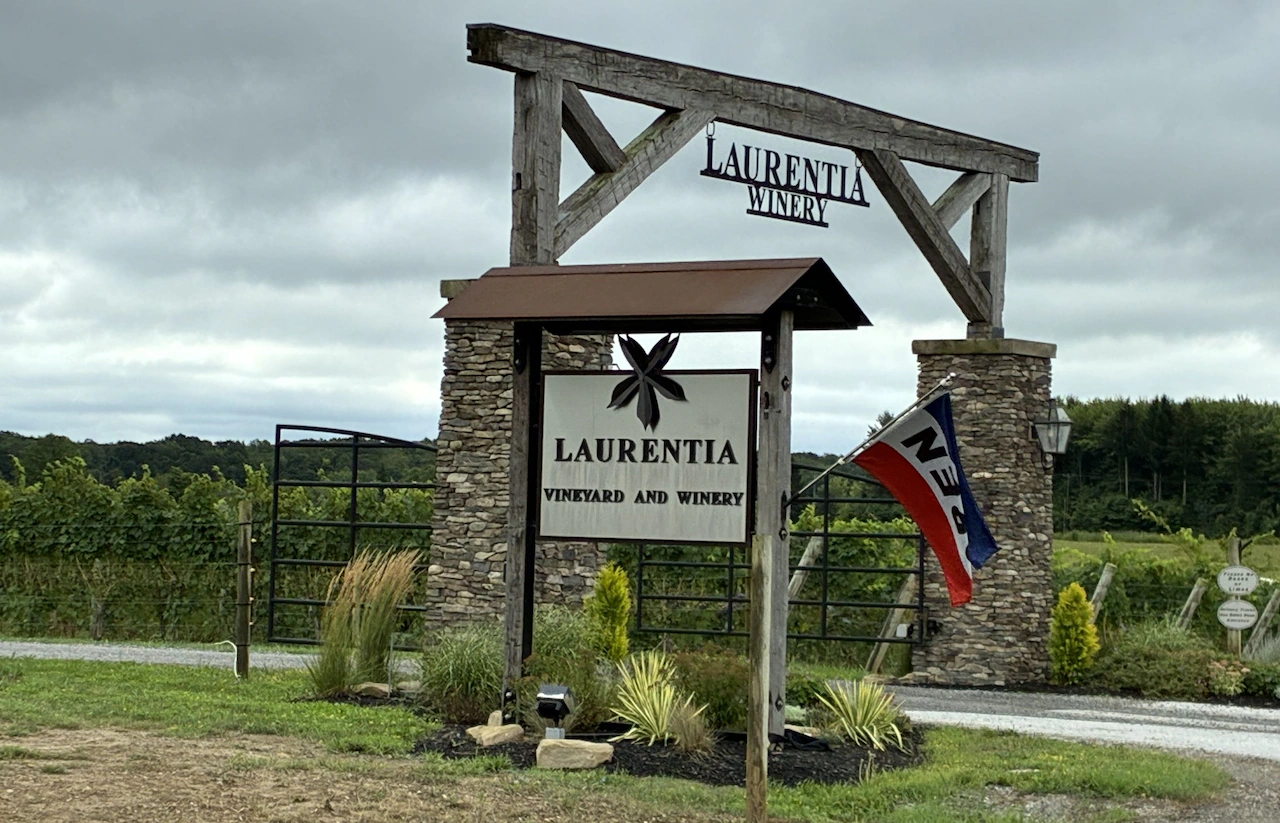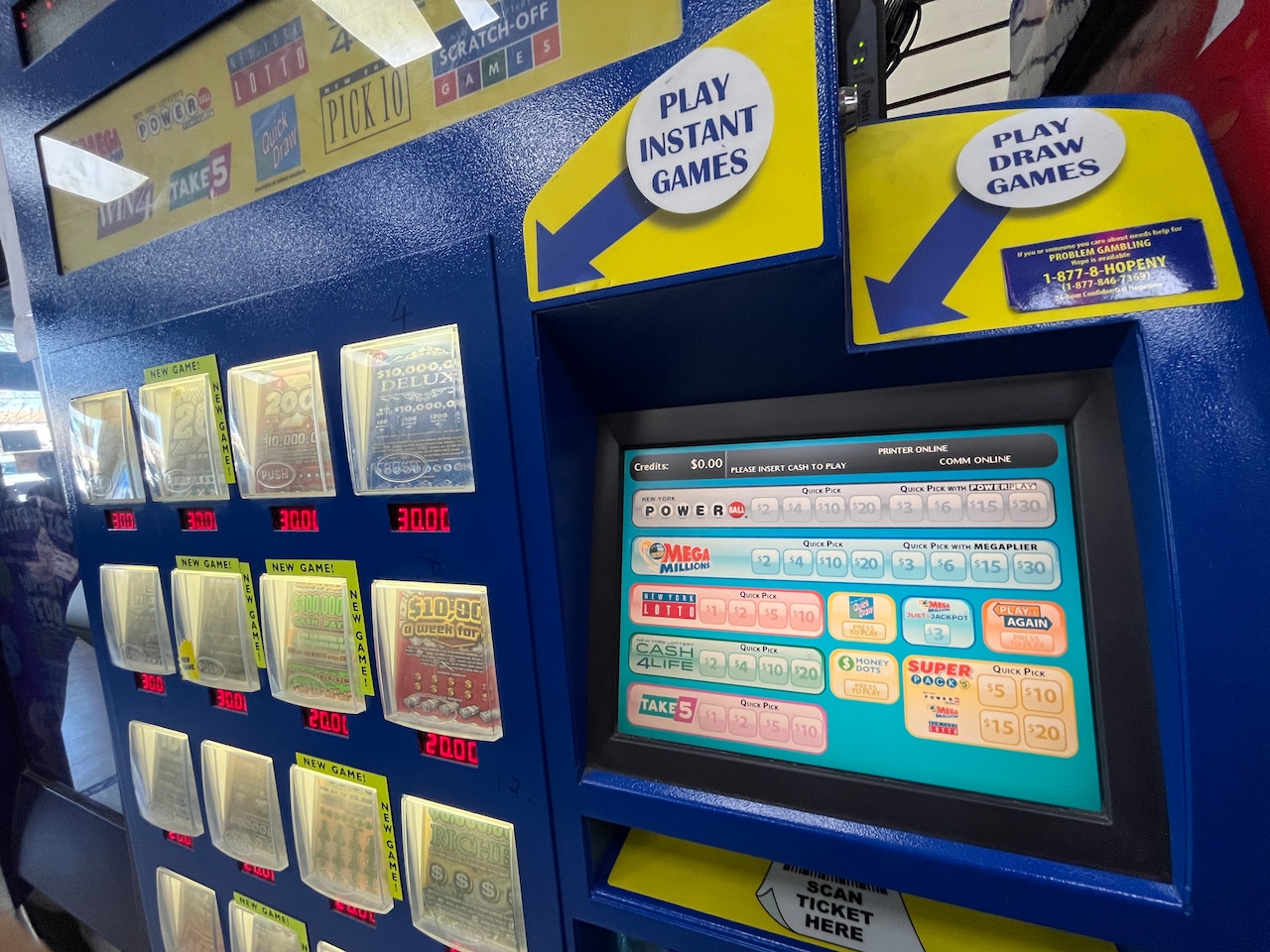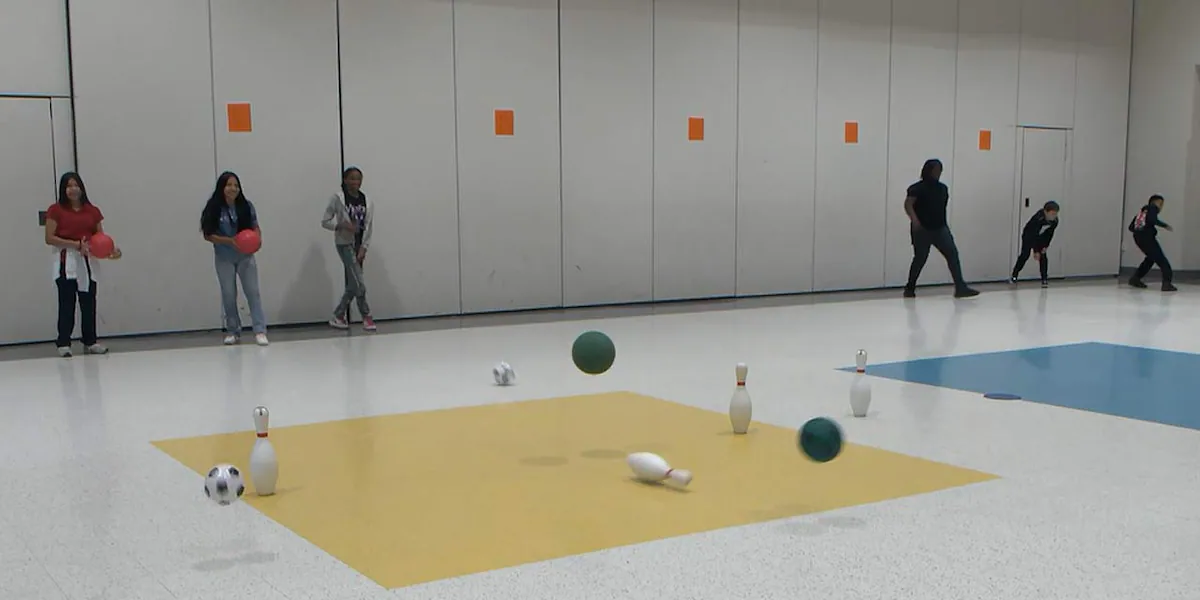
MADISON, Ohio – If you think Northeast Ohio-made wine is all sweet, a few sips at Laurentia Vineyard and Winery will change your mind as fast as you can say “I’ll have a glass please.”
“The clientele here still expects sweet wines,” winemaker Emmett Reed said. “I remember when I first came on, hearing what people said. Every third or fifth person who came in here said, ‘Do you have any sweet wines?’ Some people would take ginger ale and pour it in the wine. I saw all sorts of stuff.”
But that might be changing, thanks to Reed’s acumen at the winery, which is owned by brothers Gary and Leonard Blackie. The property covers about 100 acres between rows of vines, equipment and a beautiful tasting room marking its 10th anniversary. Word is getting out, too; the winery recently partnered with Hospitality Restaurants on a special, unique and incredibly smooth Ice Wine Martini.
Recently, right on top of harvest season, Reed walked the property, surveying the vines.
“You grow wine in the vineyard, but you shepherd the wines in the winery,” he said. “What I really love about winemaking is that harmony between the agriculture and the science. At the end of the day I’m a farmer.”
Reed, a transplanted Californian, understands wine. It’s been his passion.
He left his native California but moved back at age 22. His parents had lived there and eventually moved away, but they left a small home. When he wanted to move there it was perfect timing.
He was skilled in woodworking, good with his hands, and figured he’d go into something that played to those strengths. But in 2005 he took a job working the harvest – one of the more unglamorous but required jobs of wineries: Pick grapes and get them ready for the process of making wine.
On his first day he saw his boss and had an epiphany.
“I said, ‘That guy has a really cool job,’ and I decided that’s what I wanted to do.”
For a while he wound up in Minnesota in a non-wine job. But the constraints of a desk and the call of the grape gnawed at him – until he stumbled across an ad for the job at Laurentia. He’s been here since 2022 and is part of a wave of talented young winemakers in the area who aim to demystify wine while maintaining high quality standards.
“For a long time there was this gatekeeper thing,” he said. “You can pour the wine wrong or pair it the wrong way. … ‘We know how to do this and we’ll let you in on it sometime,’” he said about the industry.
“But in the early 2000s a lot of the young winemakers started saying, ‘We have to make this fun.’”
He also knows he has to stay in his corner of the sandbox. Creativity lends itself to a brewhouse for beer, but winemakers must know the strength of a region’s terroir. Or, as Reed says, “Do what the climate gives you.”
It didn’t take long for Reed to figure out the relationship between grapes and Northeast Ohio.
“We’re not trying to do a ‘square peg in a round hole’ kind of thing anymore. We’re not trying to grow these big over-the-top reds that aren’t going to ripen here and the style is not going to fit.”
What was needed, he said, was an Old World perspective: Higher acid, lower alcohol, less oak, better balance. Whites, though, will be aromatic and grow well with the climate.
It’s about cultivating fruit for the best wine possible. He pays particular attention to exposure of grapes on lees – dead yeast cells and other particles that sink in fermentation. It can alter the complexity and flavors of a wine.
That’s a scientific part of his job that some people might not care about. But the result of his attention to detail is found in the glass, and it’s working.
Laurentia’s Gewurztraminer is amazing, with multiple flavors changing from aroma to palate to finish – and all pleasing and balanced. A sparkling wine made entirely from Pinot Noir keeps a creamy, fruit-forward nature but with a touch of bread to keep it honest. The only hybrid Laurentia grows is Regent, an inky, dark-colored red wine Reed uses in Rosé.
Reed is part of a local winemakers tasting group – fun but necessary homework for research, comparison and palate improvement. And as he wound his way through the tasting room, with approachable country tunes playing in the background, he made a bold claim about sweet-wine drinkers.
“The consumer thinks they want something sweet,” he said, “but often it’s more what they don’t want is an overly tannic wine.”
Education is key. Since the staff fields 99 percent of questions from the public, Laurentia holds regular tastings to help servers impart knowledge “as much as possible.”
“Winemaking is a very old profession, there’s a lot of historical elements to it,” Reed said. “We’ve been making wine since the Egyptians, long before that. The art and history of winemaking is something that has changed but hasn’t. We just have better tools. The basic fermentative process, the yeast eating the sugar and producing alcohol, hasn’t changed. Then you have a region like this where people overlook it, but they’ve been growing grapes here for 100-plus years.”
But Laurentia has embraced some modern twists. The winery uses concrete fermenters.
“Aside from looking cool, what I think they do is allow more oxygen to be introduced to the fermentation process,” Reed said. “There’s this misconception you don’t want oxygen in the winemaking process, but that’s not really true especially when the wine is young.”
Also, Laurentia’s barrel program is extensive; the winery maintains about 350 barrels. Many wineries use stainless steel to hold their wine. But Laurentia uses barrels, which yield different flavors (and look cool for the public). New oak barrels can run about $1,200 apiece while used ones can cost about $150. He does a lot of tastings out of barrels as part of his research.
“You’re not courageous to be a winemaker, but it does take guts,” said Reed about the process that is reliant on Mother Nature. Each wine really is an experiment that doesn’t end for three years from vine to bottle. And one of the biggest cost-prohibitive gambles in winemaking is Ice Wine.
The good news is Northeast Ohio has one of the most conducive climates for Ice Wine. The bad news is it involves a finicky process, produces a low yield and results in a higher price.
“Ice wine is Vidal Blanc, very small production, pretty niche product,” Reed said. “We only make about 100 cases a year. It’s very tricky to grow because you have to wait for it to freeze on the vine.”
Reed said winemakers need conditions to be 13 degrees for about 12 hours to guarantee sugar solidification. And the small grapes “are a mess.”
“They’re a nightmare to get off the vine,” he said. “You have to send people out in freezing weather and everything is cold and tough and you’re trying to get it harvested.”
It was something he definitely didn’t do in California, “but it’s definitely a thing here.”
The yield is a challenge. Normally, producing one ton of grapes gives you two barrels of wine, about 50 cases. For ice wine, it takes four tons of grapes to get one barrel.
“You have to be willing to sacrifice a lot of yield out there,” Reed said.
The result is a viscous, syrupy-like wine that runs about 10 percent residual sugar and is sold in 375 ml bottles. It is a perfect after-dinner drink or very pairable with assorted desserts.
“Pound for pound usually the most expensive thing around,” he said. (It’s not uncommon for any winery to sell 375ml bottles – half of a regular-sized 750ml – of its Ice Wine for $40 or more.)
The collaboration with Hospitality Restaurants came about because of Ed Thompkins of Wines LLC. In his job as a distributor, Thompkins was well-versed with the Ice Wines of Niagara in Ontario, Canada, where he said “Ice Wine Martinis are a thing.”
The drink at Hospitality Restaurants – which includes Blue Point Grille in downtown Cleveland – meshes one ounce of Laurentia’s wine with two ounces of Grey Goose vodka. It’s topped with a skewer of frozen grapes in lieu of olives – a nice touch.
The grapes are “genius, because it keeps it cold,” Thompkins said.
What’s not cold is Laurentia’s tasting room – it heats up especially on weekends when it can draw 800 people a day, said Reed, who said it can get “a little wacky sometimes.” But Reed keeps his head, palate and nose buried on the winemaking side.
“What I really like about it is the intersection of science, hard work, artistry, farming – all four of those things hit together to create wine,” said Reed, who said you have to be willing to get up at 5 a.m. to check grapes, know how to operate a tractor and keep tabs on fermentation, among other tasks.
“It’s not a desk job by any means,” he said.
Laurentia Vineyard and Winery
Location: 4599 S. Madison Road, Madison.
Wines: The winery makes about 10 wines – varietals and styles.
Hours:
• Noon to 8 p.m. Monday, Wednesday and Thursday.
• Noon to 9 p.m. Friday and Saturday.
• 11 a.m. to 6 p.m. Sunday.
Miles from downtown Cleveland: 42.
Also:
• Full kitchen is available.
• Tables are first-come, first-served. Walk-ins only. Ten customers per table maximum.
• The Barrel Room is the event space.
Related: From ‘vine to glass,’ Lauren Fiala making her mark at expanded Baci Winery



